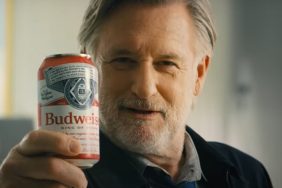Even though I’ve talked endlessly about the notion of Auteur Theory numerous (and perhaps too many) times before, in many different lectures in the Free Film School, I will reiterate (briefly) the definition of auteur theory here: An auteur, in the filmmaking sense, is typically a director whose own artistic drives and strength of creative vision is what will ultimately shapes the look, theme, and tone of the final film.
As we mull that definition over in our minds, we immediately begin to think of great film directors who have a powerful style, and who are pretty well known, maybe even have an Academy Award or two. Martin Scorsese, maybe. Ingmar Bergman. François Truffaut. Really heady and talented folks, right? However, according to the above definition, an auteur is merely a filmmaker who follows their heart, has a powerful aesthetic, and lets themself run rampant with their own ideas and interests. Indeed, I propose the following notion: The more a filmmaker cleaves to their own interests, the more powerful an auteur they are. Anyone disagree? By that idea, then, let me introduce you to one of the most powerful cinematic auteurs to ever grace the silver screen. Let me introduce you, my gentle students, to John Waters.
Ah yes, John Waters. What a wonderful man. Waters is, for those poor souls who haven’t yet been introduced to him, one of the giants of midnight movies and so-called trash cinema. He is the mad genius behind cult classics like Female Trouble, Pink Flamingos, Mondo Trasho, and Desperate Living. He is also the mastermind behind the oddball musicals Hairspray and Cry-Baby, as well as the underrated Pecker and the sorely underrated A Dirty Shame, the last feature he directed, which came out in 2004.

How do I describe Waters to the uninitiated? Many people describe his movies as gross or disgusting, even though a few of them are relatively tame. Most people would use the words “freakish” or “extreme.” His movies play like pornographic and coprophagic dark mirrors to the square and over-designed melodramas of Douglas Sirk. Many of his films do indeed contain legitimately obscene material, and some have even been taken to court over how outrageously gross they are. Waters was shaking up the midnight movie circuit long before that girl/cup film. And yet, Waters films are not mean-spirited in any way. He features freaks, cartoonish transvestites, murderers, criminals, rapists, cannibals, and people who can sing out of particularly intimate orifices, and he seems to have a loving affection for every one of them. Waters is not an exploitative hack who merely assembles a string of sick weird stuff to make the squares squirm. Well, maybe not 100%, anyway. But I would argue that he is, at the end of the day, an important auteur who follows his interests more closely than perhaps any other filmmaker. Not to say that he’s personally into things like cannibalism, but he does seem to be genuinely and unironically fascinated by the people who exist in the fringes. He’s even told stories about taking a pair of binoculars to a Baltimore hill, just so he could spy on the “adult” films at the local drive-in.
And just as much fun as his films is Waters himself. He famously gives speaking tours, wherein he describes the ever-evolving fringe that he seems to so easily locate and inhabit. Tall, thin, balding, well-dressed, and sporting an iconic pencil-thin mustache, Waters is a happy, trashy spiritual combination of William Castle and that creepy-yet-friendly older kid who sold you your first Playboy magazine back in Jr. High. He is open and eager to share what his influences are, and how he came to make films like Pink Flamingos. Evidently, he was always drawn to the dangerous world of juvenile delinquents, drugs, and drag queens, but never in a dark or desperate way. Just a more extreme and personal way to have fun. He liked sneaking into movies, and found himself admiring the works of the Kuchar brothers, Kenneth Anger films, and anything with a gay edge, a camp sensibility, or an outsider perspective. It wouldn’t take too long before the young Waters was making movies of his own.

Waters was born in Baltimore, MD (where every single one of his films is set and filmed), often called pretty outrageous by visiting tourists. Baltimore, or at least the areas that Waters boosts, is a fairly white trash town, full of local eccentrics, gleefully dangerous bars, and a thriving JD scene. Waters’ made several short films, usually renting out church basements with his own money to exhibit them, and eventually started making features with his friends “The Dreamlanders.” Dreamland was the name of Waters’ production company, and Dreamlanders were the original class that worked there. The films were all deliberate exercises in bad taste, smashing taboos, and taking endless glee in their shocking imagery. Again, though, Waters was not setting out to be a revolutionary, nor was he an embittered soul with a need to hurt others. He was a happy mutant who was merely sharing the things he found interesting. His first feature film was a flick called Mondo Trasho (1969), a picaresque about a chubby transvestite who survives a hit-and-run, and treks into the night, having sexual experiences in church, and literally wallowing in a pig sty.
This was, it should be noted, a time in filmmaking history when underground scenes began to crop up for the first time, and outsiders found access to newly available cameras. As a result, the underground experienced an explosion in content and varied material about controversial things, loud music, and bizarre personalities. There is a great recent documentary film called Blank City that details this explosion.

Oh yeah. About that transvestite. From the beginning of his career, up until 1988, Waters almost always cast a fellow named Harris Glen Milstead in a central role. Milstead, however, had spent most of his life dressing in ladies’ clothing, and had already created a fantabulous persona for herself. Probably the world’s most famous drag queen, “Divine” is a screen legend. Noisy, overbearing, and amazing, you cannot get the image of Divine out of your head. The girl can’t help it. Other friends from extreme drag shows would follow. Mink Stole has been in almost all of Waters’ films. When the Patty Hearst scandal broke, Waters only thought to cast her in a movie. She’s now been in several. Ditto for Traci Lords, and her respective scandal. Most striking is probably Edith Massey, a Baltimore local with crooked teeth, a shrill voice, and an earnest need to entertain. In his later films, he’s been wise to cast more famous actors, including Johnny Depp, Melanie Griffith, and Johnny Knoxville.

John Water’s Pink Flamingos (1972) is not the first proper midnight movie (that honor belongs to an acid western called El Topo), but it was certainly one of the “big six” of the newly cultivated midnight circuit that sprang up in the early 1970s. Notorious and gross, Pink Flamingos is likely the one film you haven’t yet had the courage to belly up to yet. All the legends are true. It does indeed contain some of the most disgusting things ever filmed. Yes, Divine eats dog poop. Yes, there is a special orifice exercise. Yes, there is on-screen fellatio. Yes, the dialogue is bonkers, and almost sounds like it was translated from another language. But, once again, it’s all good natured. True, he is trying to shock you – and he is succeeding – but there is an infectious sense of humor underneath it all. Call it good, dirty fun. There is something honest and refreshing about Pink Flamingos and its legacy. Certain filmmakers try to push the envelope, make more daring films with more shocking material, but can only come up with limp torture porn, or a scene wherein Chloe Sevigny fellates them on camera. Pink Flamingos, even though it was made 40 years ago, is still disgusting.
The story of Pink Flamingos is dirt simple: A pair of extremely dysfunctional families vie for the title “The Filthiest People Alive.” Divine, playing Babs Johnson, is the current title-holder by virtue of her horrible habits of murder, incest, and meat theft. She also has a horrible family, including a rapist son named Crackers (Danny Mills), a whorey daughter named Cotton (Mary Vivian Pierce), and an overweight gorgon of a mother (Edith Massey) who lives in a crib and dreams of eggs. Challenging her throne are Raymond and Connie Marble (David Lochary and Mink Stole), who kidnap women and force their gay butler to impregnate them so that they may sell babies to lesbian couples and use the money to perpetuate a drug ring. And that’s pretty much it. The two parties attempt to outdo one another in increasingly horrible stunts. Then there’s a murder. The end. Yes, the film is something to be endured. But, in its own way, it’s oddly enjoyable. There’s something comforting in its extremity. Well, maybe not. Maybe I’m just a bit pervy myself.
Waters’ best film is probably Female Trouble (1974), his follow-up to Pink Flamingos. Female Trouble, also starring Divine, follows a whiny teenage runaway who falls in with a group of would-be artists who like to take pictures of criminals and the ugly, touted as the new pretty. There is an acid bath, Edith Massey is kept in a cage, Divine, dressed as both a man and a women, and thanks to some clever editing, has sex with him/herself, and the flick ends with a teary execution in a women’s prison. More cohesive, but still way out on the fringe (it’s rated NC-17), Female Trouble is one for the ages.

Waters would, in 1988, pay homage to his favorite dance programs of the early ‘60s with Hairspray, a delightful little PG-rated musical with great dancing, some salient points about race, a non-cheeky up-with-fat-girls message, and a lot of excellent vintage music. You’ve likely heard of this film, as it was recently adapted into a smash Broadway musical, which was, in turn, adapted back into film. Kind of odd that the man known for extreme trashy movies should also be behind one of the friendliest Broadway musicals in recent memory. That’s like learning that Jörg Buttgereit was the one responsible for Cats. What’s that you say? You don’t know who Jörg Buttgereit is? That’s okay. Few do. He will not be getting a lecture in the Free Film School.

Waters films would, from then on, tend to skew a little less extreme. Chalk it up to his maturity as a filmmaker and as a person. He had already made a name for himself, so he didn’t need to keep filming literal fecal matter. His films did typically warrant their “R” ratings, but Waters was more interested in exploring his own past (as in 1992’s Cry-Baby) or scandalous news stories (as in 1994’s Serial Mom). The next film of his to lay claim to the NC-17 rating was his 2004 film A Dirty Shame, which is, in my eye, underrated. True, the film is little more than an encyclopedia of odd sexual habits, but I still find it gregarious and dirty.

What Waters does is, essentially, capture that feeling of nasty fun you had as a kid, back when sex was filthy, and dirty jokes were still de rigueur. He is a gay man, but he prefers to let his sexuality remain apolitical. He has said in interviews that, while he supports gay marriage, he is nostalgic for the days when being gay was considered subversive. When kissing a man was enough of a political act. Now there are boy kisses on hit TV shows like Glee, and homosexuality is so commonly seen, it’s practically boring. I of course love that gays have achieved the level of acceptance and visibility they have, and look forward to the days when they are even more widely accepted, but I can kind of understand Waters’ nostalgia for the dirty old days.
A cool theory that Waters has: No film should be longer than 92 minutes. He feels that and hour and a half is plenty time to tell a story and finish up your movie. He has decried some films for being way too indulgently long. When I’m sitting in certain long films, I can feel what he means.
These days, Waters has faced increasing trouble finding financing for his films. Indeed, he always has. Thanks to his infamy, most producers and financiers fear that Waters would merely make another geek show that would be destined to lose money and perhaps land people in court. Waters, who turned 66 this year, has most assuredly mellowed since his guerilla days, but has lost none of his impish charm, nor his genuine interest in fringewalkers. I would encourage the money people to pony up the dough. It’ll be worth it.
So take a shot of whiskey, sneak out of the house, hole up in a garage somewhere with a bunch of JD friends, and throw on an early John Waters film. Do something your parents wouldn’t approve of, and do it during a John Waters movie. You’ll find a certain cheerful thrill to it all. Then go home and ponder what you saw. You may find your interests skewing.
Homework for the Week:
Start with Hairspray. Seriously, don’t jump right to Pink Flamingos. Watch Female Trouble second. Once you kind of have a vibe as to what Waters is all about, then take the plunge. What’s the difference between extreme films that are mean-spirited, and those that are good-natured? Can a film be both disgusting and charming? What kind of filmmaking environment would be required to make an extreme film? What kind of cultural climate? Could a film like Pink Flamingos be made today? Why, or why not? If you didn’t have a budget for advertising, how would you make your film stand out? Do you think that merely cleaving to your interests can make you a notable filmmaker?







